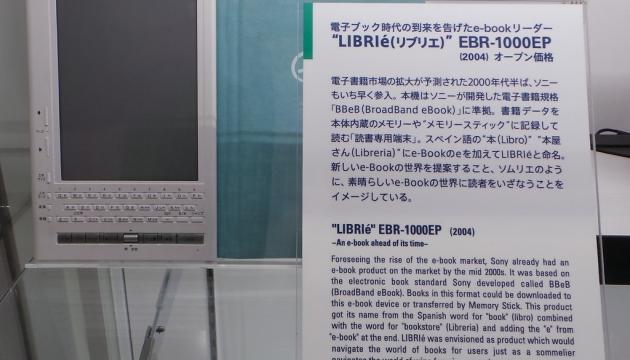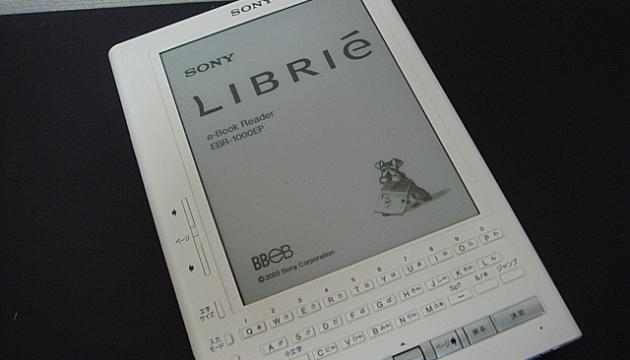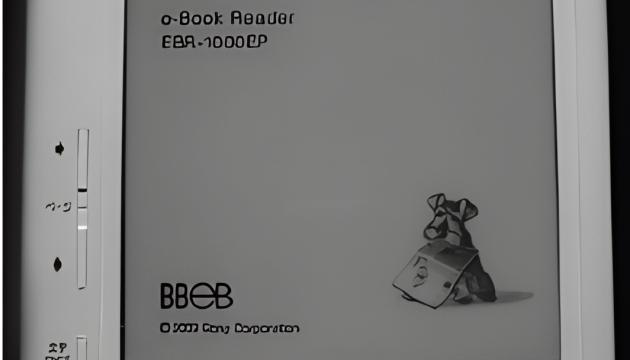Brief Summary:
Invention/Product: Sony Librie EBR-1000EP e-reader
Company: Sony Corporation (in collaboration with Philips and E Ink Corporation)
Country: Japan
Period: Released in Japan in April 2004
Essence: One of the first commercially available e-readers using electronic ink (E Ink) technology to create a paper-like display.
The Sony Librie was a pioneering device, ahead of its time, laying the groundwork for future e-readers like the Amazon Kindle. However, it did not achieve commercial success due to its high price, limited content selection, inconvenient DRM system, short content lifespan (books "self-destructed" after 60 days), and the market's overall unpreparedness for such a type of device.
Creation History
In the early 2000s, Sony, already experienced with electronic dictionaries and PDAs, saw potential in the emerging electronic ink (E Ink) technology, which promised to create a screen comfortable for prolonged reading, similar to paper. In collaboration with Philips (who contributed to the display electronics) and E Ink Corporation (developer of the screen technology), Sony developed the Librie EBR-1000EP. The device was introduced and launched in the Japanese market in April 2004, positioning itself as a revolutionary way to read books.
Operating Principle
Sony Librie utilized a 6-inch monochrome display based on E Ink Vizplex technology. Key features:
- E Ink Screen: Displayed text and images with high contrast, without backlighting (like paper), reducing eye strain and consuming power only when changing images. Resolution was 800x600 pixels.
- Memory: Built-in 10 MB memory (sufficient for about 20 books), expandable via Memory Stick cards.
- Book Format: Used a proprietary format, BBeB (BroadBand eBook).
- Controls: Buttons for page turning, menu navigation, and a QWERTY keyboard for text input (search, notes).
- Power Supply: 4 AAA batteries, providing up to 10,000 page turns.
Books could be loaded from a computer via USB or purchased/rented through the online service TimeBook Town.
Claimed Advantages
- Comfortable Reading: E Ink screen simulating paper, free from flickering and glare.
- Portability: Ability to carry an entire library in one lightweight device.
- Long Battery Life from a single set of batteries.
- Ability to Take Notes and search through text.
- Paper and Space Saving.
Why Did It Fail?
- High Price: Priced at around 40,000 yen (approximately $370-400 at the time), which was very expensive for a single-function device.
- Limited Content and DRM:
- Few available books in the proprietary BBeB format.
- Books purchased or rented through the TimeBook Town service had strict restrictions: they could only be read on one device and "disappeared" (became inaccessible) 60 days after download, even if purchased. This caused immense user dissatisfaction.
- Inconvenience of Use: Slow E Ink screen refresh (typical of early technology versions), not always intuitive menu, need to connect to a PC to download books.
- Lack of Wi-Fi: Books could only be downloaded via USB.
- Competition with Paper Books: The market was not yet ready to massively abandon traditional paper books for an expensive and limited electronic gadget.
Sony Librie never made it beyond the Japanese market and was quickly discontinued. Sony later released more successful Reader models, having learned from many of these mistakes.
Ahead of Its Time?
Yes, the Sony Librie was one of the first devices to showcase the potential of E Ink technology for reading, and in that sense, it was ahead of its time. It anticipated the arrival of the Amazon Kindle (2007) and other successful e-readers. However, Sony failed to create an appealing content ecosystem and a convenient business model.
Can It Be Revived?
Specifically, Librie cannot be revived. But the idea of e-books on E Ink has not only been revived but has become a massive market. Modern e-readers (Kindle, Kobo, PocketBook, etc.) offer much higher quality screens, a vast selection of content, convenient services, Wi-Fi, backlighting, and affordable prices. The Sony Librie was an important, albeit unsuccessful, step in this direction.
WTF Factor
The biggest WTF was the decision to make **purchased books "self-destruct" after 60 days!** Imagine buying a book, and after two months, it simply disappears from your device. This is such an anti-consumer policy that it's surprising Sony even decided to release a product with such conditions. It's like buying a car that turns into a pumpkin after two months.


